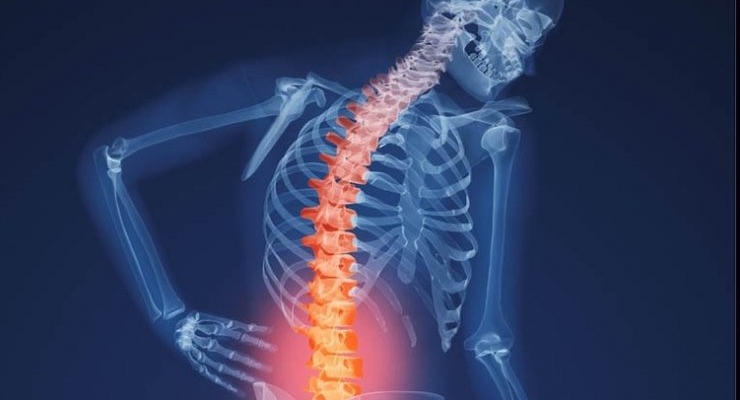Table of contents
Although it may seem, in principle, that multiple sclerosis is a disease that arises only in young people, this is not the case. More than 10% of the affected people are over 65 years old,
What is Multiple Sclerosis?
Multiple sclerosis is a degenerative disease of the nervous system that affects the brain and spinal cord. It is a chronic condition and has no cure at the moment.
This disease attacks the myelin, the substance that surrounds and protects the nerve cells and that is the main responsible for the fast and effective transmission of electrical impulses from one neuron to another.
Due to the deterioration suffered by the myelin, scars are formed, known as sclerosis (which are produced in multiple locations of the brain and spinal cord, hence the term ‘multiple sclerosis’). What causes this damage to the myelin is the impossibility of correct transmission of nerve impulses.
Multiple Sclerosis: symptoms
The symptoms of multiple sclerosis and their evolution vary greatly from one patient to another.
It is possible to divide these symptoms as follows..
Visible symptoms
Here is a list of some of the most common visible symptoms:
Tremor
It is one of the most common symptoms. The tremor appears mainly in the upper extremities. The most common types of tremors in multiple sclerosis are postural tremor (appears when the head or one of the extremities maintains a fixed posture) and intention tremor (which occurs when one wants to grasp an object).
Poor coordination
Patients with sclerosis suffer from a disorder characterized by a decreased ability to coordinate movements, coupled with a loss of strength. This can be seen in the more everyday actions of older adults. For example, writing, using cutlery during meals or picking up small objects.
Speech difficulties
Inaccurate articulation of words, as well as changes in the rhythm of speech or vocal fatigue are shown in most people with multiple sclerosis. To avoid these problems limiting the life of our family member, early attention from the speech therapist and neuropsychologist is of utmost importance.
Bowel or bladder problems
In some cases, this disease also affects the bowel and bladder. This is due to some factors such as a slower intestinal transit or lack of coordination of the sphincters. Thus, constipation, lack of hunger or abdominal pain are common problems.
Invisible symptoms
This type of symptoms are more complicated to perceive than the previous ones and, on many occasions, they are not directly associated with multiple sclerosis. These are the following:
Fatigue or weakness
It is the most common symptom. Almost 90% of people who suffer from this disease suffer from general fatigue. This also has a high impact on their quality of life, since it has a very negative effect on their daily routine.
Mobility problems
Along with fatigue, it is one of the earliest and most life-conditioning symptoms for people with multiple sclerosis. These mobility problems get progressively worse and, in the most severe cases, can lead to loss of autonomy.
Pain
This is one of the symptoms that can have the greatest impact on the quality of life of patients and is also one of the most frequent (two out of every three people with multiple sclerosis suffer from episodes of pain). These are produced mainly in the extremities, the back and the head (suffering from headaches and migraines of greater intensity than those of the general population).
Sleep disorders
Sleep problems are very common in older adult patients (more than 70% suffer from them). This alteration, reproduced in the form of difficulty to fall asleep, to fall asleep in places little appropriate for it or to present/display too much dream throughout the day, can aggravate other symptoms like the pain and the fatigue.
Cognitive disorders
Cognitive dysfunction is one more consequence of the disease. There are several functions that are most affected: close memory, information processing and the ability to solve problems. Cognitive rehabilitation can be very effective in treating these disorders.
It is important to note that very relevant functions are not affected, such as general intellect and reading comprehension.
Visual disorders
Optical neuritis is the first manifestation of the disease in 20/30% of cases. It is the inflammation of the optic nerve that causes blurred vision, dull pain behind the eye and loss of color vision (colors are perceived less vividly).
Epasticity
Spasticity is described as a disorder consisting of muscle stiffness and involuntary spasms. Produced by injuries to the upper motor area, the spine and the brain, the degree of spasticity can have enormous variations over time.
Emotional Disorders
The symptoms are not only in the physical and cognitive fields, but also in the emotional one. Thus, mood can be affected by multiple sclerosis, and depressive episodes can occur.
Difficulty in swallowing
Patients with multiple sclerosis may suffer from dysphagia, a disease that causes problems in swallowing food.
Loss of balance
Balance problems, dizziness and vertigo derive from the interruption in neuronal communication. Based on this, the person walks in a wobbly manner. Along with this, there are other symptoms which can affect balence, such as visual problems, tremors or fatigue.
Alterations in sensitivity
These can affect any part of the body, from the face, arms or legs. The most common sensations are numbness, tingling, burning, prickling and hypersensitivity of the skin. The increase of the environmental temperature can worsen these ailments.
Difference between multiple sclerosis and amyotrophic lateral sclerosis
Although at the beginning they may share some of the same symptoms, they are very different in most aspects, especially in terms of the rapid development of the disease and life expectancy. Thus, amyotrophic lateral sclerosis limits more the day-to-day life of the patients who suffer it, being a more serious condition than multiple sclerosis.
Diagnosis of Multiple Sclerosis
There are no specific tests to diagnose multiple sclerosis.
In order to achieve a clear diagnosis, it is necessary to carry out “differential diagnosis” to rule out diseases that can be treated in a similar way.
Based on this, the doctor will perform the following tests:
Blood tests.
Spinal cord puncture.
Magnetic resonance imaging.
Clinical history.
Treatment of multiple sclerosis
Currently, there is no cure for multiple sclerosis. The treatments which exist serve only to alleviate the symptoms. The therapies are of two types:
Pharmacological: to try to stop the progression of the disease.
Rehabilitation: to preserve the functionality in the day to day.
Physiotherapy to combat multiple sclerosis
Physical therapy is the main treatment. With it, it is possible to improve, in a remarkable way, the quality of life of the people who suffer from this degenerative disease. The physiotherapist will work on the motor and sensory problems. This is so that the person recovers after the most intense outbreaks and manages to enjoy the maximum possible functionality.
Advances in Multiple Sclerosis
In recent years, the prognosis of people who present it has improved considerably. Thanks to the latest advances researchers are certain that, in a few years, it will be possible to create a treatment so effective that patients suffering from this disease will age without having reached a degenerative phase. Well, there are many teams of researchers who are currently developing new treatments for multiple sclerosis, in which the enormous work to be able to know in advance the progression of the disease stands out.







